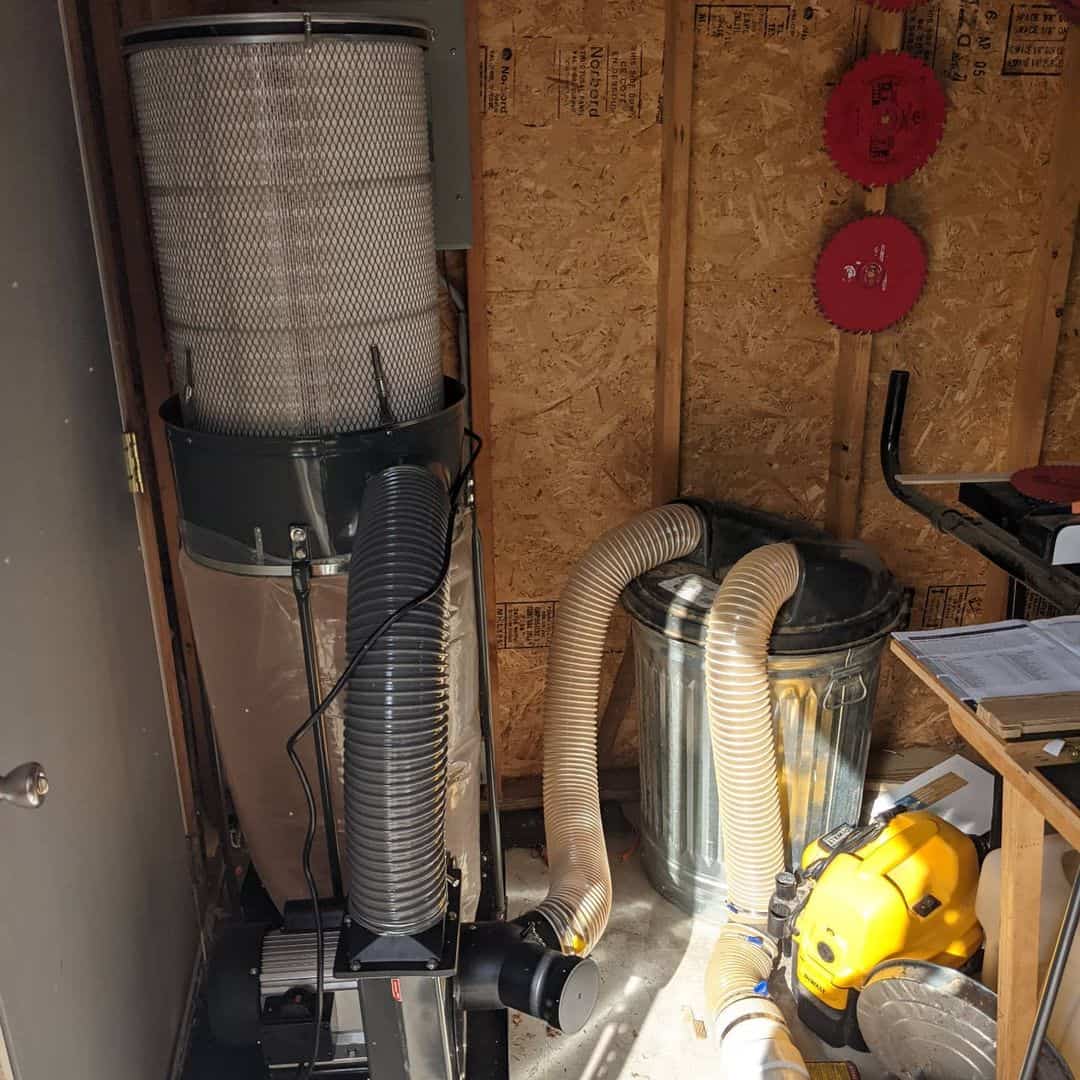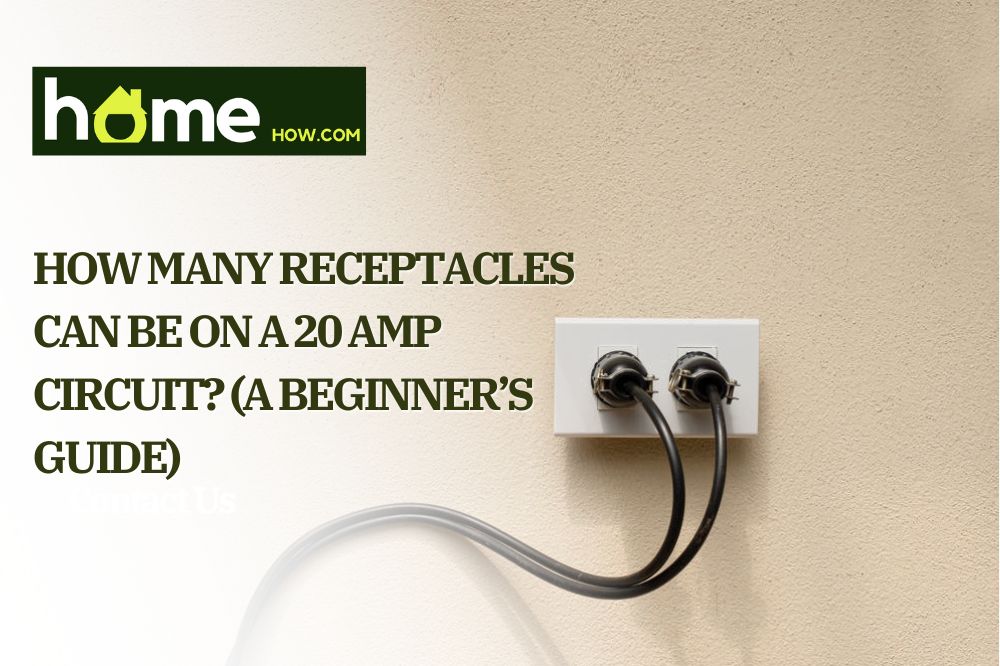When planning a home upgrade using existing wiring, it’s imperative to know the safety limits of each circuit and avoid any dire consequences. The number of receptacles or outlets you can safely attach depends on the amp rating of the circuit.
On a 20 amp circuit, you can attach up to 10 receptacles without an issue. It is also crucial to evaluate the power consumed by the appliances attached to the outlets, as exceeding its load capacity by over 80% can be hazardous. For a 20-ampere circuit, a maximum load of 16 amperes is recommended.
The National Electrical Code recommends the total load should not exceed 1250 watts. Keep reading to know more about the 20-amp circuit, computing the outlet count on a circuit, getting familiar with the types of outlets, and relevant information to upgrade your home’s electrical system safe.
Understanding Circuits

A 20 or 15-amp circuit can easily power one or two bedrooms. While the amp rating of the circuit shows how much current can safely flow, the circuit doesn’t have a 20 amp current flow.
Likewise, circuits with different ampere ratings are compatible with different wire sizes. For example, a 20 amp circuit will work best with a 12-gauge wire than a 14-gauge wire.
Receptacles are also made specifically for each circuit type. A 20 amp ground fault interrupter receptacle won’t be compatible with a 15 amp circuit. The best choice is to use a 15-amp receptacle for the circuit.
How Many Receptacles Can Be on a 20 amp Circuit?
Effective load management is necessary when adding new outlets to a circuit. To compute the outlet count, multiply the amps with volts to get how many watts the circuit can support. Most countries, including the USA, use a 120-volt circuit. For a 20-amp circuit, the total number of volts can be up to 2400 watts.
In theory, you can make 13 outlets and attach appliances, each requiring 1.5 amps and consuming a total of 19.5 amperes. However, that’s not possible in real life. As mentioned, putting a load of more than 80% of the circuit’s total capacity can trip the circuit breaker or even result in a fire hazard. Therefore, a 20-amp circuit will be 1920 watts and can support a maximum of 10 outlets.
What if More Than Ten Outlets Are Attached to the Circuit?
It will only lead to overloading of the circuit. This excessive load can cause the attached devices and appliances to break down or malfunction.
While some people think purchasing a power strip and attaching multiple appliances to a single outlet can resolve the issue, it’s rarely the case. These power strips are dangerous to use if they don’t have any overload protection enabled.
Instead of a single 20-amp circuit, install another circuit and split the load between the two. For example, If you need 14 outlets for your space, creating two 20-amp circuits, with each circuit providing seven outlets, will do the job. This splitting of circuits gives a homeowner an advantage to operate their appliances safely and provides an option for further expansion of the electrical wiring.
Maximum Power Draw of a 20-Amp Breaker
The maximum draw is determined by the circuit’s wattage and the voltage flowing through the circuit. The amp draw can be calculated by dividing the total wattage by the voltage. For a 1500-watt circuit running on 120 volts, the maximum draw will be 12.5 amperes.
Calculating the daw power of your circuit is crucial when attaching multiple appliances, as each has varying power consumption levels. If your circuit’s maximum draw is 14 Ampere, attaching a load of more than 14 amperes in any of the amp plugs will result in a hazard, damaging the circuit breaker, electrical wiring, and attached branch circuits.
Whether you are attaching receptacle outlets to your home or a commercial building, know the wattage of the devices you will be using and the drawing power of the circuit.
Putting Lights and Outlets on a 20-amp Circuit
While you can put light switches and receptacles in one circuit, making a dedicated circuit for your light fixtures is best. As these lights require less power, electricians prefer putting them on a 15-amp circuit. On average, the circuit can light up to 12 bulbs, requiring at most half an ampere.
However, if you prefer adding light bulbs to the 20 amp circuit, remember that each light you attach will be attached in place of the outlet. For example, if you want to attach four light fixtures to the circuit, you will only be able to attach six more outlets.
The outlets used are also circuit-specific. Each circuit has an outlet with the same ampere rating. A 20 amp circuit has 20 amp outlets, whereas a 15 amp circuit has 15 amp outlets. While you can attach a 15-amp outlet in a 20-amp circuit, attaching a 20-amp outlet in a 15-amp circuit will make the circuit breaker trip as the outlet’s amp rating exceeds the maximum load.
According to the regulations, using counter plugs to install lights should be avoided. These plugs must be installed individually or wired in groups of two on a single 20-amp circuit. The plugs come in handy when two heavy-duty appliances must be used without tripping the circuit breaker.
What Appliances Can Work with a 20-amp Circuit?

These circuits are not meant to be used for power-consuming appliances like refrigerators, air conditioners, dishwashers, cookpots, or other heavy-duty appliances. You can use the 20 amp circuit on smaller kitchen appliances, powering the garage, bedrooms, and bathrooms without an issue.
Here’s a list of appliances you can run on a 20-amp circuit.
- Toasters
- Blenders
- Microwaves
- Televisions
- Home Entertainment Systems
- Lamps
- Vacuum Cleaners
- Heaters
It’s crucial to stay within the 1920-watt limit for a 20-amp circuit. Avoid attaching an appliance in a 20-amp receptacle that uses more than 1920 watts, as doing this will result in the circuit breaker or the fuse going off.
Types of Outlets
Understanding different outlet types can aid in knowing more about the compatible circuits and the appliances they support, making it easier to choose when renovating your property.
1. 15-Amp Outlets
These outlets are a feasible choice for light fixtures and small gadgets. Most homes in the United States have a 15-amp and a 20-amp circuit to run common household appliances.
2. 20-amp Outlets
These circuits can run multiple appliances in dwellings or be used for a dedicated purpose like running an air conditioner. These 20-amp plugs are found mainly in the garage, kitchen, laundry rooms, and other areas where a heavy-duty appliance needs to be plugged in.
3. AFCI Outlets

AFCi or arc fault circuit interrupters can prevent a fire hazard if an arc fault causes the problem. In contrast, ground fault circuit interrupters or GFCI can protect electrical systems from ground faults. These outlets are preferably installed in areas where heavy appliances must be hooked up.
4. Tamper-Resistant Receptacles
These outlets can be used as an alternative to the conventional 15 and 20-amp outlets in areas with lower outlets on a wall. The tamper-resistant feature protects toddlers and babies from electrocution when touching the sockets. They are also designed to prevent small objects from getting in the outlet sockets, making them safe to use.
The shutters protect the outlet sockets and open when a compatible plug is introduced into the socket.
5. Switched Outlets
These outlets are commonly used for devices and appliances that require to be plugged in even when not in use. These outlets consist of a plug and a switch to control the electricity.
6. Smart Outlets
Smart electrical outlets like USB outlets are gaining popularity, as they allow charging your gadgets and devices by directly plugging the charging wire into the outlet. Most smart home systems include this USB outlet option that can even be switched on or off from the home’s control system.
Final Thoughts
In a nutshell, you can add ten outlets on a 20-amp circuit, and it must not exceed 80% of the total amperage of the circuit, ensuring proper functionality. While we have tried our best to simplify the explanation, if you still have any queries, call in a certified electrician or a service provider before making a decision.
Their expertise can also make it easier to choose the right type of outlet and relevant materials for your home renovation project.
We hope the information found here is helpful.
